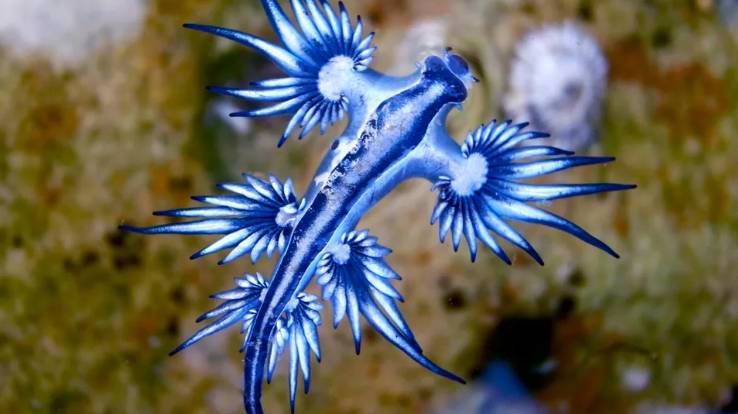According to Mayor José Luis Sáez, the Mayor of Guardamar del Segura, the bathing prohibition on the eleven-kilometer beaches of Guardamar Council was lifted before yesterday, Thursday August 21st. After two blue dragons, a poisonous marine mollusc, were discovered stranded on Vivers Beach shortly before seven o’clock on Wednesday afternoon, the municipality raised the red flag along its entire littoral.
Since early Thursday morning, a substantial unit has been deployed, with a series of patrols commencing at six a.m. to inform swimmers and find additional specimens. This encompassed cleanup service vessels, local police, and lifeguards. The PA system was also utilised to notify beach users, and in certain instances, they were instructed to exit the water.
The blue dragons “appear harmless at first glance,” according to Luis Fernández Fuentes, the coordinator of the Guardamar lifeguard unit. They are small, buoyant, and very attractive, hovering at water’s edge. However, they are hazardous due to the fact that they employ the venom of the Portuguese man-of-war, which is one of their primary sources of sustenance, when they perceive a predator as a threat. He underscored that the bite is significantly more potent than that of jellyfish.
The mayor acknowledged that the process of locating new specimens was complex. This creature rarely exceeds four centimetres in length. And if it was discovered yesterday on Vivers shoreline, located north of the town centre, adjacent to the mouth of the Segura River, it was likely due to their being stranded on the shore. “We were overcome with uncertainty as the lifeguard service was concluding, and we resolved to raise the red flag as a precautionary measure to ensure the safety of the public and inform them,” stated Sáez. “We have observed it in the Canary Islands, Cádiz, and the Balearic Islands, and we must determine whether it is an isolated incident or becomes more prevalent.”
The City Council has prohibited swimming along its eleven kilometres of coastline since Wednesday afternoon, following the discovery of two specimens of Glaucus atlanticus, also known as the “blue dragon,” on Vivers beach. This marine mollusc, which is barely four centimetres in length, is capable of inducing nausea, vomiting, and severe pain with its sting. A red flag has been raised in response to the discovery.
The lifeguard coordinator issued the alarm signal upon discovering the specimens on the shore. The safety protocol was subsequently implemented, which included preventive surveillance to rule out the presence of additional individuals and a prohibition on swimming.
As has been the case, the red flag would remain on the beach for a period of 12 to 24 hours, contingent upon the situation’s progression. This was the case, as the bathing prohibition was lifted just one hour after the lifeguard hours commenced, as per Sáez.
On Wednesday, Vivers beach, which is situated between the mouth of the Segura River and Babilonia beach, was still crowded, despite the prohibition, despite the fact that there were significantly fewer bathers in the water.
An animal that is equally gorgeous and perilous
The Glaucus atlanticus is a nudibranch that is only 4 centimetres in length, but its appearance is both deceptive and striking. Its shapes are redolent of a mythological dragon, and it is an intense metallic blue. Nevertheless, its allure conceals a genuine threat. It feeds on jellyfish, including the Portuguese man-of-war, from which it extracts stinging cells and accumulates them in its body, thereby increasing its capacity to induce excruciating reactions in humans.
The bite can result in severe pain, vertigo, nausea, and vomiting, and it can cause more severe reactions in individuals with pre-existing conditions. Biologists caution that the blue dragon is a perilous species, despite its diminutive size.
It consumes jellyfish, including the Portuguese man-of-war, from which it extracts venomous cells and stores them within its body. Nevertheless, experts have noted that it also consumes a variety of other innocuous prey and that the specimens that have been identified arrive at the Mediterranean coasts in a dismal state.
They are found in the tropical and subtropical oceans. They are most prevalent in the Atlantic waters surrounding the Canary Islands, where their presence frequently serves as a warning to seafarers. “They occasionally enter the Mediterranean, exploiting the surface Atlantic current in the Strait of Gibraltar, as is the case with other tropical species.”









No Comment! Be the first one.